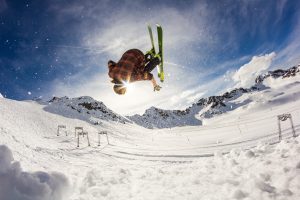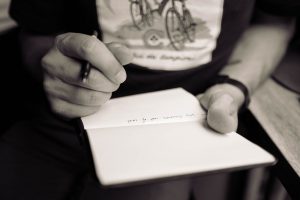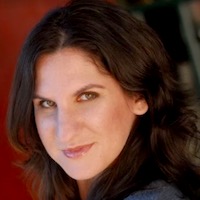I am firmly convinced that there are very few people living today who remember reading of the “Boer War” with England and her colonies, Canada, and Australia. War was declared in the year 1899 and ended in 1902.
The Boers were farmers who lived in the Cape Colony, South Africa, and who finally rebelled under English government “trekked” to the Transvaal, across the Vaal River, to form a republic of their own, under their own independent rule and laws. My father was one of the dissatisfied Boers and joined a train of wagons to reach, what to them was the Promised Land. The family at that time consisted of my mother, my father, and two small sons. The year was 1883. I, (a girl) was born in a wagon on the “Trek” with just the help of a Kafir woman, who with her husband, insisted on going with their “baas” (master) and “on-novi” their mistress. From the tales with which my father kept us enthralled in later life, they suffered many hardships. The Kafirs (Negros) were savage and cruel, and like the Indians in America, fought bitterly and savagely to hold the land that they had just inhabited. We finally settled in a small dorp (larger than a village, but not a town) named Petersberg, in the northern part of the Transvaal. My father established a wagon builders shop there – also a flourmill and prospered very well. I remember that we had the first piano there to take the place of the little organ, which we had brought with us on the “trek.” We also had the first “horse hair” upholstered furniture for the parlor, and I can still feel how it scratched in spite of the numerous petticoats and pantellettes I wore, on the rare and few occasions we were allowed in the parlor when I was called upon to play a rather intricate piece of music. “Echoes from the Mountains” – and how I hated it!!!! We lived in Petersburg, and as most large families do, happiness, quarrelling, grieving when sickness brought one of us down – and joyful at recovery, brought our family close together. Pretoria was the capitol of the Transvaal. Johannesburg – the wealthy and teeming city of a gold strike, and there is where our placid humdrum lives were rudely interrupted. England wanted our gold and demanded for equal rights. The demands were so exorbitant that they were rejected and war was declared. There was great excitement in the “dorp” and as I was then fourteen years old, I felt that the outcome of the war was on my shoulders, and we would run the English (rovi-neks – red-necks) as the Boers called them, right out into the ocean. Every able-bodied man and boy over fifteen years of age was armed and ready to go. My father was elected commander of the men of the dorp and adjoining farms, and they mustered over five hundred. We thought that was enough manpower to whip the world. The women dried beef by the gunnysacks full and baked “biskuit” (a large light sweet bun dried out in the outside ovens) which all Boer homes had, and sent the men of with blessings and tears. My two oldest brothers went with my father. One was sixteen and a half and the other fifteen, but they both were crack shots, as all Boer children were practically born with a gun in their hand for protection from Kafirs and wild animals. I could also shout about as well as the boys, as I accompanied my father on his yearly hunt for game to make “biltong” (jerky) as there was no ice in those days, and we could not keep fresh meat over one day.
That night my brother Hans (twelve years old) ran away and caught up with my father and his commando at the Crocodile River (the border of Rhodesia). Incidentally, he fought through the three years of the Boer War and was reported as being very brave and took his toll of the English.
In the meantime, the “dorp” was shut off from the world. We had no flour, sugar, soap, in fact none of the necessities of life outside of what we could raise. We made bread out of pumpkins, soap weed for cleanliness, but we did not starve – although it was hard on the small children and old people. My mother was a wonderful woman in that she never let us know how worried and heartsick she was. There were nine children then – three in the commando and six at home (three boys and three girls). I was the oldest and tried to shoulder some of the burden, but I realized later that I probably added to her worries, as I was a very self-opinionated person, and, to me the war was exciting and gave me more freedom to do as I pleased.
After and during World War no. II there was a great deal of talk, radio, newspaper, etc. about the concentration camps, and my aim in the manuscript is to enlighten the world that the English had the first concentration camps in history in which were confined the Boer women, children, and old people taken from the occupied territories. In 1901, the war was not favorable for the Boers and many of the armed men came in and surrendered, as they did not know what had become of their families. I ran into a squadron of rovi-neks all mounted. I said, “Are you the verdomde (damn) rovi-neks,” and the sergeant in charge of them told me to walk ahead of them to our house. When I got there they had twelve soldiers and a corporal in the house, and they said they would stay there until they moved us. They had already started tearing down the mill and the wagon shop, had destroyed my mother’s brick oven out in the yard in which she used to bake as many as twenty loaves of bread at one time, because we fed the blacks that worked for us too, and we were a family of nine children (six boys and three girls). My father had some very fine lion and tiger skins that had been tanned and also a large family bible almost as big as a table and written in scrip, besides some heirloom silverware. This the lieutenant confiscated. They kept us there for four days with soldiers sleeping on the floor in the big dining room. I was fourteen years old at the time and did not like the way they looked at me, but the Corporal told me, “Never you mind Miss; I’ll see that you are not hurt.”
On the morning of the fourth day, the Corporal told my mother to get us ready, as we were to go on the train to a camp. He also told my mother to make a bedding roll and change of clothes for all of us. We were very upset, as we did not know how the war was progressing and where my father and the boys were. Once it was rumored that they had been taken prisoner, but my mother never believed it. On the fourth day, they walked us to the depot where there was a long train of flat cars waiting, and there were other women, children, and old men. It took them all day to get us settled on the cars and the train shunted back and forth all night, so there was not much sleep for anyone. The next day we went as far as Pretoria, the capitol of the Transvaal, and there they unloaded us and put us in a camp. There were seven of us, but that same night the baby girl who was two years old died. A sergeant came to the pup tent we were living in and brought a little black coffin and we went by cab to the cemetery and buried her. There was no one to pray over her grave but my mother, and I sang an old Dutch hymn, “Praise God in Joy and Sorrow.” The next day we were loaded back and taken to a big camp at a place called Irene. There were several thousand women and children there and all living in those little round pup tents. It was very cold there and the only heat we had was a twenty-gallon coal oil can with holes punched on the sides and iron rods put through like a grate. On that, my mother did all our cooking and heated bath water – so we did not get many baths. Every morning we lined up with ration cards and got coffee, mutton, sugar, weevily flour and yellow soap. If one had money, you could buy other foods at exorbitant prices. We did not have any money, but they wanted help in the hospital – so I applied for the job and got it for a shilling a day, the equivalent of a quarter in American money. The measles broke out in camp and I helped prepare sometimes as many as fourteen children a day for burial. There were registered English nurses there, but they were very busy drinking brandy and gin with the officers that were in charge of the camp. The camp was surrounded with as many as ten strands of barbed wire and a sentry at each gate and corner, so there was no way of getting out of there. I worked in the hospital several months, but when I was on night duty, I could not rest in the daytime owing to the cramped quarters we were in, so I resigned. My mother became very weak and ill, so I took over the cooking and other chores. On one end of the camp, there was a ditch of water and there we did our washing. You had to get up very early to find a place to kneel and wash clothes. Most Boer women are husky and fat and used to pioneering and I had to fight sometimes to get in line for rations and to wash. I finally took a long hatpin with me and would stick the woman in front of me. When she would jump, I would take her place and so finally push my way to the front.
We stayed in the Irene camp for about eight months and then we were told to prepare to move again, so back on the flat cars we went and came to a place in Natal called Colenio. It was the most desolate place I had ever seen – all flat prairie dotted with enormous high ant hills – some of them over six feet high. The only improvement was that they gave us an officers square tent, roomy enough to hang a blanket across one end for sleeping quarters, and there they told us that they were bringing my father and second oldest brother, who was then seventeen, as they had found them almost dead with malaria. It was a sad reunion, as we knew then that we were losing the war, but there was one bright side to it. My father was with the little commando that had taken Winston Churchill prisoner, and at that time had not made his escape yet, so we felt that we had gained something – only to be disappointed soon, as he was not held prisoner very long. In this camp, there were thousands of scorpions and we used to trap them and put them in jars and childlessly called them our “rovi-neks” (red necks). Strange to say, no one was ever bitten and the scorpions must have fed on the ants.
My oldest brother who was nineteen had not been accounted as being captured yet, so I very stupidly and secretly wrote him a letter advising him not to surrender and not to believe the propaganda the English were putting out – that the Boer women wanted all the men to come in and lay down their arms, as we felt sure we had already lost the war. I contacted the sentry at the gate and asked him to try and smuggle the letter out to some farmers that had been allowed to return to their farms in the conquered country. He took the letter, and the next day when we were eating our noonday meal (sago and mutton) a corporal and four privates came and told my father I was to go with them to be court-martialed. My father was in a malaria chill, but he told them he would go with me. They told him that no one could accompany me, so with all the children crying and my mother looking stunned and pale, I went with them. Being young and arrogant, I was not at all afraid. The captain asked me how I thought the letter would reach my brother, and I told him that there would be no doubt at all if the letter got into the hands of a Boer that had been brought in. They kept me there in the court tent for several hours asking all sorts of questions pertaining to the whereabouts of my two brothers that were still out fighting and harassing the “rovi-neks” whenever they could, but, although I did not know anything, I pretended that I had been in touch with my brothers right along!!!
Being hale and healthy, I did not feel the horror of our surroundings and treatment. I had always been musical and had a fine contralto voice, so I organized a class among the girls and boys of my age, and we sang and taught them reading and arithmetic. Finally, the officer in charge let me have a square tent and a blackboard and chalk and gave us some boards for benches, which my father put together for us. We also used the tent for a church, and I found enough good voices to have a choir, which even the guards and officers enjoyed.
Then game the order to move again, and this time we were taken close to the Natal coast and about one hundred miles from Durban to a place called Pinetown. It was a lovely place. Our food was better, and the climate was perfect, but we were all anxious to be taken back to our homes as the war was just about over. We were in this camp until peace was declared and then we were again loaded on the flat cars and spent two weeks being shunted from one place to another. The coal dust and cinder settled on us in transit until we looked like the Kafirs. When we arrived at Petersberg they had another camp ready for us and everyone was terrible disappointed, but we discovered that all the Petersberg commando had not come in yet, among them my two brothers John, the oldest, and Hans, who was thirteen years old. One night we were awakened by a voice softly calling my mother and it was my two brothers. There were about fifty of them in our camp that night, and they had come through the barbed wires and sentries without any trouble. They were all starved, and the women gave them all the rations we had. They visited for several hours and left, as they had entered without being discovered. The camp was right next to the railroad, and the next morning the English brought a train with “Long Tom” cannons on it and kept sending salvos over the hill that the Boers had gone over. The women all lined up on the inside of the fence and jeered and laughed at them, and they shouted at us and said they would turn the fire on us!!
A month went by and then they captured the men who had been in the raid on our camp. My two brothers were with them, and when they laid down their arms on the square of our camp, a yellow girl who had worked for us for twenty years had managed to get into camp on a pass – ran up to where my brothers stood – knelt down in front of them and said “Baasies (Masters) – you are so thin and look so sick” (they both had malaria), “but you can still whip the bloody rovi-neks if you just had some food.”
THERE SEEMS TO BE A PAGE MISSING
In 1902, we were taken back to our half demolished homes and began to pick up the pieces again. My father rebuilt the mill and shop, and an Australian by the name of Murphey went into partnership with him. They made a fair living, but my father was a broken man and very unhappy. I had an uncle, General William Snyman, which is our family name, one of the oldest and respected men in Africa, who was living under English rule in the Cape Colony when war was declared. He immediately left for the Transvaal to join his brother, my father, to fight against the English. Much to our joy, my uncle could not go back to Cape Colony, as he was a supposed traitor, so he came to America and became a good friend of the then President, Theodore Roosevelt. My uncle went to Mexico with the help and with the consent of the Mexican President established a Boer colony at Mesquite near Chihuahua. He at once got in touch with my father. I had married an employee of the Department of Justice in Pretoria. We sold everything that we could – left our homes and lots – some lots in the dorp of Louis Trichart, and sailed for America and Mexico.
We did not stay very long in Mexico, as things did not turn out as we thought they would, so we, my husband, myself, and my little girl, my father and his family all came back to the United States and settled near El Paso, Texas, on an alfalfa farm, which we later sold and moved to New Mexico where we are still living. Of my family, there are only three of us living now – my sister, a brother, and myself (a widow) where we are living on my ranch near Las Vegas in New Mexico. Here we have lived, loved and died, and as I am now seventy-six years old, I also expect to die in this land of freedom and equality for all – and I am thankful that we have found “Peace” at last.
Copied from REDDIT FOURNOTE Post: My Greatgreataunts Account of the Second Boer War/






 Their data enabled them to report an increased awareness during lucid dreaming compared to REM sleep. Hobson reported, “In order to move from non-lucid REM sleep dreaming to lucid REM sleep dreaming, there must be a shift in brain activity in the direction of waking.” The person must come to an active state while dreaming to exert control over their dream.
Their data enabled them to report an increased awareness during lucid dreaming compared to REM sleep. Hobson reported, “In order to move from non-lucid REM sleep dreaming to lucid REM sleep dreaming, there must be a shift in brain activity in the direction of waking.” The person must come to an active state while dreaming to exert control over their dream.




You must be logged in to post a comment.